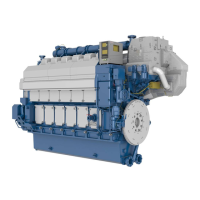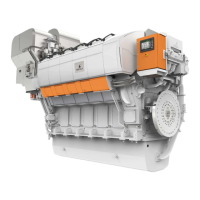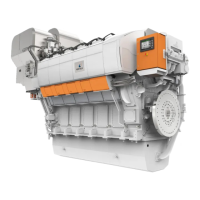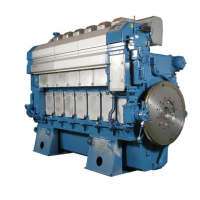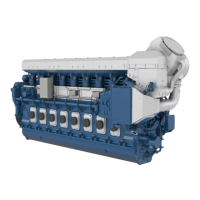different weighting factors for different loads that have been corrected to ISO 8178 conditions. The used
ISO 8178 test cycles are presented in the following table.
Table 13.2 ISO 8178 test cycles
100100100100100Speed (%)
D2: Auxiliary engine
10255075100Power (%)
0.10.30.30.250.05Weighting
factor
100100100100Speed (%)
E2: Diesel electric propul-
sion or controllable pitch
propeller
255075100Power (%)
0.150.150.50.2Weighting
factor
IdleIntermediateRatedSpeed
C1:
"Variable -speed and -load
auxiliary engine application"
05075100105075100Torque (%)
0.150.10.10.10.10.150.150.15Weighting
factor
Engine family/group
As engine manufacturers have a variety of engines ranging in size and application, the NO
x
Technical Code
allows the organising of engines into families or groups. By definition, an engine family is a manufacturer’s
grouping, which through their design, are expected to have similar exhaust emissions characteristics i.e.,
their basic design parameters are common. When testing an engine family, the engine which is expected
to develop the worst emissions is selected for testing. The engine family is represented by the parent engine,
and the certification emission testing is only necessary for the parent engine. Further engines can be certified
by checking document, component, setting etc., which have to show correspondence with those of the
parent engine.
Technical file
According to the IMO regulations, a Technical File shall be made for each engine. The Technical File contains
information about the components affecting NO
x
emissions, and each critical component is marked with
a special IMO number. The allowable setting values and parameters for running the engine are also specified
in the Technical File. The EIAPP certificate is part of the IAPP (International Air Pollution Prevention) Certi-
ficate for the whole ship.
IMO NOx emission standards
The first IMO Tier 1 NOx emission standard entered into force in 2005 and applies to marine diesel engines
installed in ships constructed on or after 1.1.2000 and prior to 1.1.2011.
The Marpol Annex VI and the NO
x
Technical Code were then undertaken a review with the intention to further
reduce emissions from ships. In the IMO MEPC meeting in April 2008 proposals for IMO Tier 2 and IMO
Tier 3 NOx emission standards were agreed. Final adoption for IMO Tier 2 and Tier 3 was taken by IMO/MEPC
58 in October 2008.
The IMO Tier 2 NOx standard entered into force 1.1.2011 and replaced the IMO Tier 1 NOx emission
standard globally. The Tier 2 NOx standard applies for marine diesel engines installed in ships constructed
on or after 1.1.2011.
The IMO Tier 3 NO
x
emission standard will enter into force from 1 January 2016, but the Tier 3 standard
will only apply in designated special areas. These areas are not yet defined by the IMO. The IMO Tier 2 NO
x
emission standard will apply outside the Tier 3 designated areas. The Tier 3 NO
x
emission standard is not
applicable to recreational ships < 24 m and for ships with combined propulsion power < 750 kW subject
to satisfactory demonstration to Administration that the ship cannot meet Tier 3.
Product Guide Wärtsilä 34DF - 3/2012 111
Product Guide
13. Exhaust Emissions
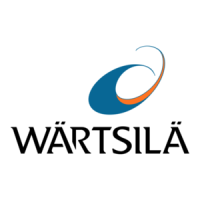
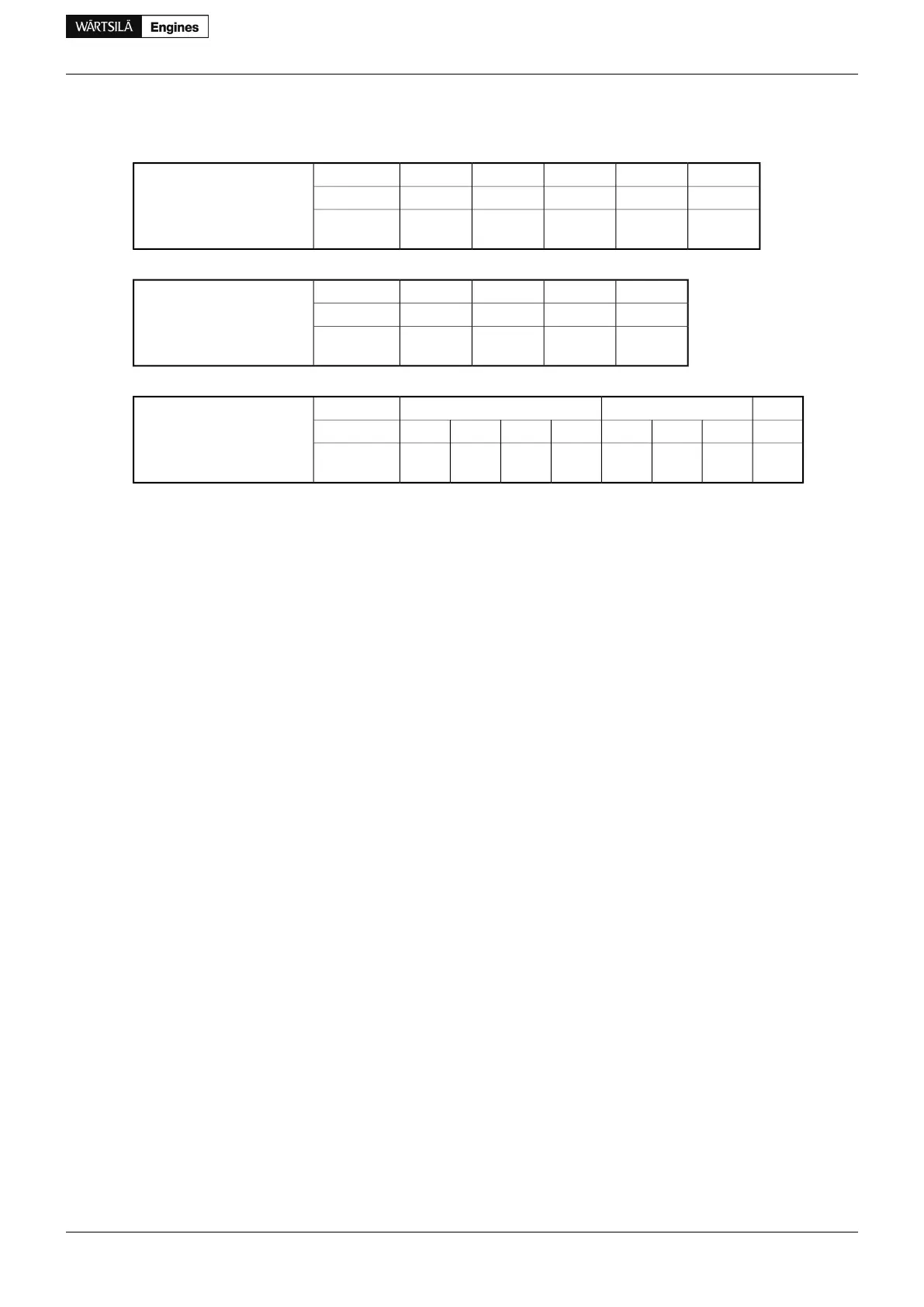